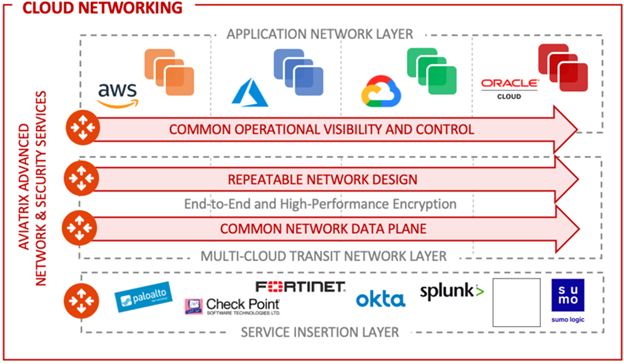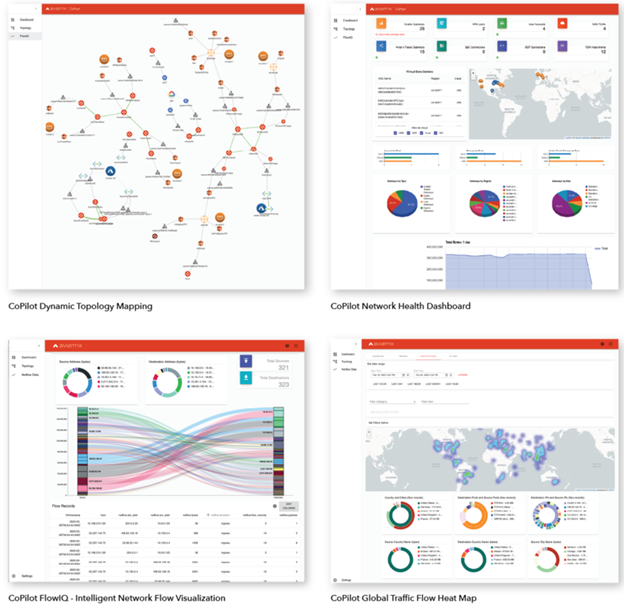The Future of IT Infrastructure Schedule a demo
As enterprises realize that physical investments to expand their Information Technology (IT) infrastructure are both costly and time-consuming, they are turning to the cloud to grow their infrastructure at scale faster. And with edge computing increasing the popularity of the hybrid model, a mix of deploying infrastructure both on-prem and in the cloud, enterprises are leveraging the power of multi-cloud to further decentralize cloud resources and enable flexibility in an enterprise’s physical location.
However, there are challenges with managing multi-cloud environments that organizations are still trying to address in order to keep up with the digital transformation required to maintain competitive. This article looks at those key challenges and how to address them through multi-cloud visibility and control.
The Rise of Hybrid and Multi-Cloud
Cloud technology has drastically changed the enterprise’s calculation of time and cost in scaling IT infrastructure. Whereas changes can take years to implement with traditional methods such as on-prem, cloud is allowing enterprises to scale faster while saving or keeping costs constant. At the same time, organizations are seeing that time-to-market is decreasing and customer satisfaction and infrastructure resilience are increasing with cloud. Many enterprises are trying to get out of the data center business altogether, finding that it is very costly to run data centers compared to running workloads in the cloud.
Today, the hybrid cloud is the new preferred infrastructure model, where the enterprise has resources both on-prem and in the cloud. Edge computing is further demonstrating the hybrid advantage, with hybrid allowing for data processing to happen closer to where the data is produced, insights are consumed, and actions are taken. In some cases, on-prem allows for optimal data performance, such as when applications are closer to the on-prem data center. In other cases, local operation may be required by regulations or preferred for privacy, security, or resilience reasons. At other times, it is more advantageous for resources to be deployed to the cloud if applications are far away from on-prem data centers and closer to cloud availability zones.
Within the hybrid cloud model, enterprises are increasingly embracing multi-cloud by using no tools, in-house developed tools, or enterprise off-the-shelf applications. Multi-cloud decentralizes cloud resources and enables flexibility in the enterprise’s physical location while also reducing latency and shifting the burden of support to the cloud service provider.
Challenges with Multi-Cloud
Even as enterprises embrace multi-cloud, they are encountering significant setbacks during deployment. The following are the most common challenges that enterprises encounter on their multi-cloud journey:
Connecting and Managing a Multi-Cloud Environment running on AWS (Amazon Web Services), Azure, GCP (Google Cloud Platform), OCI (Oracle Cloud Infrastructure), and Alibaba
Enterprises that need services spanning multiple cloud service providers find it difficult to manage and scale their operations and connect clouds. Not having a repeatable network architecture makes it more difficult to manage growth. Shadow IT teams sometimes emerge, hidden VPCs (Virtual Private Clouds) are deployed in parallel, and confusion arises across the organization about who is responsible for what infrastructure.
Lack of Visibility and Security
Cloud service providers do not always offer the tools that network engineers need to triage issues should a problem occur, so network engineers often rely on cloud service providers to fix issues. Not having the right investigative tools on hand increases the high mean-time-to-resolution (MTTR) and time-to-market (TTM).
Focusing on roles instead of skills
As hybrid and multi-cloud models emerge, successful enterprises adopt a collaborative approach to IT skills development, where critical skills are taught across functions. Traditional IT staff shouldn’t be the only ones who know the relevant skills about how to manage, operate, and use cloud tools — business users should be equipped with the knowledge required to leverage multi-cloud as well. Rather than thinking territorially, enterprises should be more progressive, scalable, and align budgets more closely with business needs.
Maintaining Operational Continuity
Moving to a hybrid IT infrastructure model requires new tools and processes as enterprises may not be limited to just one cloud but multiple clouds. But it can be difficult to train people on all the different cloud capabilities and processes on a sustainable basis. Furthermore, multi-cloud presents complex deployment models and increased risk of lock-in and prohibitive costs.
End of Information Sharing and Increase of Compliance Requirements
With the European roll-out of General Data Protection Regulation (GDPR), other regions may also soon follow suit with similar compliance requirements. To prepare, enterprises need to be aware of where their data is stored and transferred, which means that they need security, visibility, and control that allows them to manage data from a single control plane. They also need to implement appropriate data governance and tools that will enable them to pivot and execute as new compliance requirements may become mandatory in the next few years.
Operational Inefficiencies
Many enterprises have not completely reduced their costs, even if they have adopted the hybrid cloud model. The costs are still staying at about a 1:1 ratio.
Often this is due to the fact that investments are being made where the customer is now instead of where the customer will be in the future. Enterprises need to plan proactively on issues like privacy, security, compliance, and employee training so that their organizations can become more robust and their operating costs reduced.
Moving Forward with the Multi-Cloud Reality
Since multi-cloud is the most important trend defining IT infrastructure right now, enterprises need a solid approach that allows them to leverage the full benefits of multi-cloud while not losing visibility, security, and control.
As enterprise networking teams peel back the onion on cloud networking, it becomes clear that cloud providers only deliver basic network connectivity. More visibility, more control and advanced networking and security features are needed.
Enterprises need an architecture that will scale to support the rapid evolution of their applications and business for decades, whether in a single cloud or across many clouds. The architecture must define a common control plane that supports native cloud Application Programming Interfaces (APIs) and advanced networking and security capabilities for enterprise-class visibility and control across all clouds.
This can be achieved by using a repeatable network architecture that utilizes a common transit, which opens up possibilities for visibility, security, and connectivity to various kinds of users and on-prem and other cloud resources.
The Aviatrix Difference
The Aviatrix cloud network platform meets the demands of today’s multi-cloud networking reality with architectural design that leverages cloud service provider APIs and adds advanced services to provide the capabilities that network engineers require.

For enterprise-grade visibility and control across clouds, modern multi-cloud networking architecture must define a common control plane that supports native cloud APIs and advanced networking and security capabilities.
Multi-cloud visibility and control plus flexibility
Multi-cloud visibility and control are at the top of the list for enterprise IT teams. The public cloud IT infrastructure is no longer the playground for early adopter pioneers and developers. Enterprises must architect the multi-cloud network in a way that delivers visibility and control across all layers of the cloud network, from the application layer across transit networking to the access layer.
Network engineers have come to expect a level of visibility and control that basic cloud networking constructs lack. The architecture should define the operational capabilities needed to gain the visibility and control required while maintaining the flexibility, simplicity and automation that motivated the business to adopt the cloud in the first place.

Seamless and secure access
Access technologies have been around for a long time, but the cloud is not the legacy data center; cloud is the business. The cloud access layer is an integrated part of your multi-cloud network architecture. Access is the foundation for securely connecting on-prem applications, applications running on other clouds, employees, partners, customers, branch offices, and legacy data centers into the cloud so these entities can all be part of the cloud, not just plugged into the side of it.

The modern multi-cloud architecture access policy seamlessly and securely connects on-prem applications, applications running on other clouds, employees, partners, customers, branch offices, and legacy data centers into the cloud so these entities can all be part of the cloud, not just plugged into the side of it.
Cross-functional certification
To address the need to equip enterprise teams cross-functionally with the skills needed to fully leverage multi-cloud, Aviatrix also offers a certification for multi-cloud networking. This allows enterprises to focus on upgrading critical skills across teams instead of creating critical roles that are difficult to sustain and that increase business continuity risk.
See Multi-Cloud Architecture In Action
Let us walk you and your team through a multi-cloud architecture and show you how you can take control of your IT infrastructure with industry-leading security, visibility, and advanced networking features. We can help you understand how easy it is to get started with a multi-cloud networking approach.
Visit: https://aviatrix.com/schedule-demo/ to schedule a Zoom call today.
Syed Ali is part of the Technical Marketing team at Aviatrix and is an Aviatrix Certified Professional. He is an experienced IT/SI consultant with experience at a Big 4 management consultancy, where he provided systems implementation and strategic advisory services to clients in public sector, transportation, and consumer-packaged goods verticals. He holds MSc Computer Science, BMath, and BBA degrees.
Aside from his interest in cloud networking, Syed is also passionate about community involvement and supporting the growth and development of the emerging workforce and younger generations. He resides in the Toronto, Canada area.

